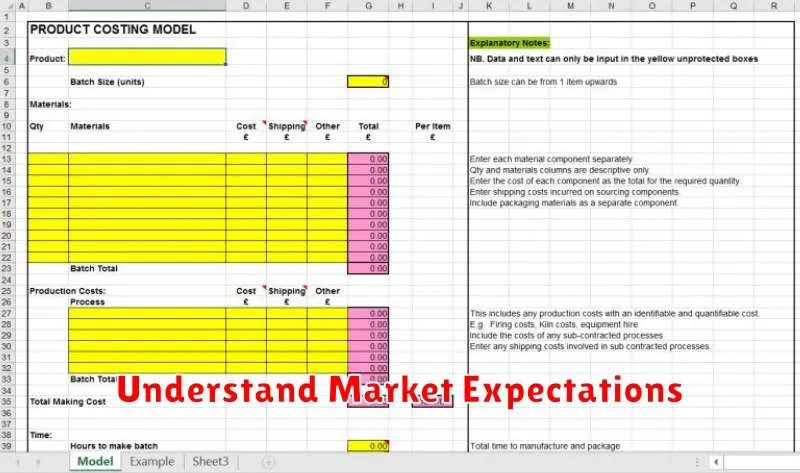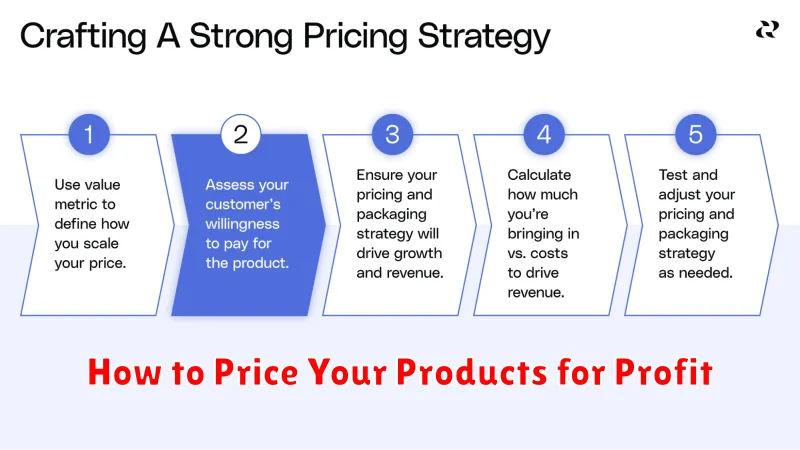Setting the right price for your products is crucial for the profitability of your business. Pricing too high can deter customers, while pricing too low can leave money on the table. This comprehensive guide on how to price your products for profit will walk you through proven strategies and techniques, enabling you to optimize your pricing strategy and maximize your returns. Learn to confidently determine the optimal price point for your products, covering everything from calculating costs to understanding market dynamics. Whether you’re launching a new product or reevaluating your existing pricing model, this guide will provide valuable insights to help you achieve sustainable profitability.
Mastering the art of product pricing is essential for long-term business success. In this article, we’ll delve into the core components of effective pricing strategies, including cost analysis, competitive analysis, and value-based pricing. You’ll gain a clear understanding of how to calculate profit margins, account for overhead expenses, and factor in market competition to arrive at a price that both attracts customers and ensures your profitability. Unlock the secrets to pricing your products effectively and confidently steer your business towards financial success.
Why Pricing Strategy Matters
Pricing strategy is more than just putting a number on a product. It’s a crucial element of your overall business strategy and significantly impacts your profitability and market positioning. A well-defined pricing strategy can be the difference between success and failure.
Profit Maximization: Effective pricing ensures you cover costs and generate the desired profit margins. It involves understanding your cost structure, target market’s willingness to pay, and competitor pricing.
Market Positioning: Price communicates value. A premium price can position your product as high-quality and exclusive, while a lower price can attract budget-conscious customers. Your chosen pricing strategy should align with your brand image and target market.
Competitive Advantage: A strategic pricing model allows you to respond effectively to competitors and gain market share. By analyzing the competitive landscape, you can identify opportunities to differentiate through pricing.
Know Your Costs First
Before you can determine a profitable selling price, you must have a thorough understanding of your costs. Accurately calculating these costs is essential for ensuring your business remains viable.
There are two primary types of costs to consider: fixed costs and variable costs.
Fixed Costs
Fixed costs remain constant regardless of your production volume. Examples include rent, salaries, and insurance premiums.
Variable Costs
Variable costs fluctuate depending on the quantity of goods produced. These costs include raw materials, direct labor, and packaging.
Understanding the interplay between fixed and variable costs is crucial for determining your break-even point and setting profitable prices.
Understand Market Expectations

Pricing isn’t just about covering costs and making a profit; it’s also about meeting customer expectations. Market expectations play a crucial role in how customers perceive the value of your product. A price too high can deter buyers, while a price too low might raise concerns about quality.
Research is key to understanding these expectations. Analyze competitor pricing to gauge the acceptable price range for similar products. Consider the perceived value your product offers compared to the competition. Does it have unique features? Is it made with higher quality materials? These factors can justify a higher price point.
Also, consider the target market. Different customer segments have varying price sensitivities. A luxury product aimed at a high-income demographic will command a higher price than a budget-friendly alternative.
Choose the Right Pricing Model

Selecting the right pricing model is crucial for profitability. Several models exist, each with its own advantages and disadvantages. Consider your costs, target market, and competitive landscape when making your decision.
Cost-plus pricing involves adding a markup to your production costs. This ensures profitability but may not be competitive if your costs are high. Value-based pricing focuses on the perceived value to the customer. This can lead to higher profits but requires a deep understanding of your target market.
Competitive pricing involves setting prices similar to your competitors. This can be effective in established markets but may lead to price wars. Premium pricing sets higher prices than competitors, emphasizing quality or exclusivity. This works well for luxury goods or niche markets.
Test and Adjust Prices Over Time
Pricing isn’t a one-time decision. Continuous monitoring and adjustment are crucial for maximizing profitability. Market conditions, competitor pricing, and even customer perception can shift over time. Therefore, regular price testing is essential.
Consider implementing A/B testing with different price points for your product. Analyze sales data and customer feedback to determine the optimal price. Track key metrics like conversion rates, average order value, and profit margins to understand the impact of price changes.
Don’t be afraid to experiment. Small price adjustments can yield significant results. Perhaps a slightly higher price doesn’t impact sales volume, boosting your profit margin. Or, a small discount could incentivize a larger purchase volume. Data analysis will reveal these trends.
Avoid Undervaluing Your Offerings
One of the most common pricing mistakes is undervaluing your products or services. This can stem from a lack of confidence, fear of competition, or simply not understanding the true value you provide. Undervaluing not only hurts your profit margins but can also damage your brand perception. Customers may perceive lower prices as a sign of lower quality.
Accurately calculating your costs is crucial. This includes both direct costs (materials, labor) and indirect costs (overhead, marketing). Factor in a reasonable profit margin that aligns with your business goals and industry standards. Don’t be afraid to price your offerings competitively based on the value you deliver, not just the price of your competitors.
Consider the perceived value your customers receive. Are you offering exceptional customer service, a unique product feature, or a specialized skill? These factors justify higher prices. Research your target market thoroughly to understand their willingness to pay and the value they place on different features and benefits.

